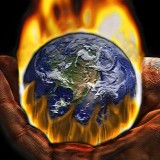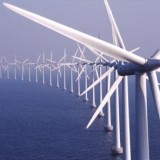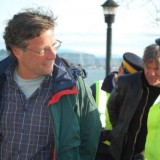If Dr. Richard Muller, a professor of physics from the University of California, Berkeley, is not the last of the global climate change skeptics, he should be. For years he has been one of the highest profile critics of the procedures and conclusions of the UN’s Intergovernmental Panel on Climate Change (IPCC), arguing that its current analysis of evidence is too flawed to definitively conclude a relationship between anthropogenic emissions of carbon dioxide and rising global temperatures.
He has since changed his mind, offering an opinion piece in The New York Times (July 28/12) describing his “total turnaround” on the subject and defining himself now as “a converted skeptic”. His transformation is worth exploring.
Funded by the American multi-billionaire Koch brothers — themselves heavily invested in fossil fuels and major funders of climate change contrarians — Professor Muller gathered a team of a dozen scientists to examine the evidence from a single authoritative perspective. Rather than using the more diverse strategy of the IPCC, his team examined only raw temperature records, the data he believed would reveal whether or not the planet was warming and, if so, whether it correlated to rising levels of atmospheric carbon dioxide.
Professor Muller’s team began by examining 1.6 billion temperature records from 36,000 stations dating back to 1753, about 100 years longer than previous data sources. His Berkeley Earth Surface Temperature project (BENT) eliminated all possible sources of error. It ruled out “urban heating” — cities generate their own heat, and large areas of asphalt and roofs also increase temperatures so the project used only rural temperatures. BENT ruled out “data selection” — previous studies compiled samples from a representative 20 percent while the BEST project used 100 percent of temperature records. The project ruled out “poor station quality” — not all temperature records were reliably accurate so it allowed for this error factor. And, finally, it ruled out “human intervention” and “data adjustment factors” by automating the data collection process so no element of subjectivity could intrude on the statistics.
The BENT project also took into account the effect of ocean currents on any heating, as well as solar variability — satellite information revealed the sun’s output of energy to be relatively stable and that sunspots had very little effect on any heating. And, finally, the project considered the cooling influence of particulate matter from volcanic explosions. The graph of temperatures from 1753 to the present shows distinct and sharp drops after every major volcanic eruption — Laki, Tambora, Cosiguina, Krakatoa, Agung, Chichon and Pinabubo — followed by an immediate recovery. The line of the graph arches slowly upward from 1753 until 1950 when its ascent increases markedly. The IPCC proposed the possibility that prior to 1950 the temperature rise may have been due to increased solar activity; the BENT project ruled out this possibility because the temperature rise correlates too closely to the rise in atmospheric carbon dioxide. In most respects, the BENT findings are even more dramatic than those of the IPCC. Professor Muller estimates that the global rise in temperature attributed to human activity has been 1.5°C since 1753, of which 0.9°C has occurred since 1950.
As a disciplined scientist, he jumps to conclusions carefully. “Much to my surprise,” he wrote, “by far the best match [to temperature increase] was to the record of atmospheric carbon dioxide, measured from atmospheric samples and air trapped in polar ice.” This match doesn’t prove conclusively that rising carbon dioxide levels are responsible for global warming, he notes. Correlation is not causality. But the correlation indicates “it’s extremely likely that at least 74% of observed warming since 1950 was manmade; it’s highly likely all of it was.” As a caution, he notes that, “To be considered seriously, any alternative explanation must match the data at least as well as does carbon dioxide.” Presently, nothing else comes close to being a candidate. Without a better explanation, the evidence compels the conclusion that anthropogenic greenhouse gas emissions are “almost entirely the cause” of Earth’s rising surface temperature.
Professor Muller is also quick to note that no particular weather event can be linked to the global temperature rise of 1.5°C. He is technically correct. But his declaration raises an interesting question. What, if any, is the effect of a rising temperature on weather? Heat energizes everything — this what heat does. His study did not venture into the complex realm of climatology. It is inconceivable, however, that such a temperature increase could not have some effect on heat transfer, humidity, precipitation, wind patterns, jet stream flows and the myriad of other factors affecting weather.
Meanwhile, Professor Muller is intent to offer advice from his “surprise” discovery. “Science,” he writes in his New York Times article, “is that narrow realm of knowledge that, in principle, is universally accepted. I embarked on this analysis to answer questions that, to my mind, had not been answered. I hope that the Berkeley Earth analysis will help settle the scientific debate regarding global warming and its human causes. Then comes the difficult part: agreeing across the political and diplomatic spectrum about what can and should be done.”
Indeed, the next part will be difficult. The findings of the BENT project simply confirm a finding and focus an issue that is now beyond the bounds of reasonable dispute. Skeptics, deniers and habitual contrarians have just lost the remnant of their tattered credibility. So the moral weight for corrective action shifts to our political leaders — where the avoidance of their ethical duty is no longer an excusable option.






